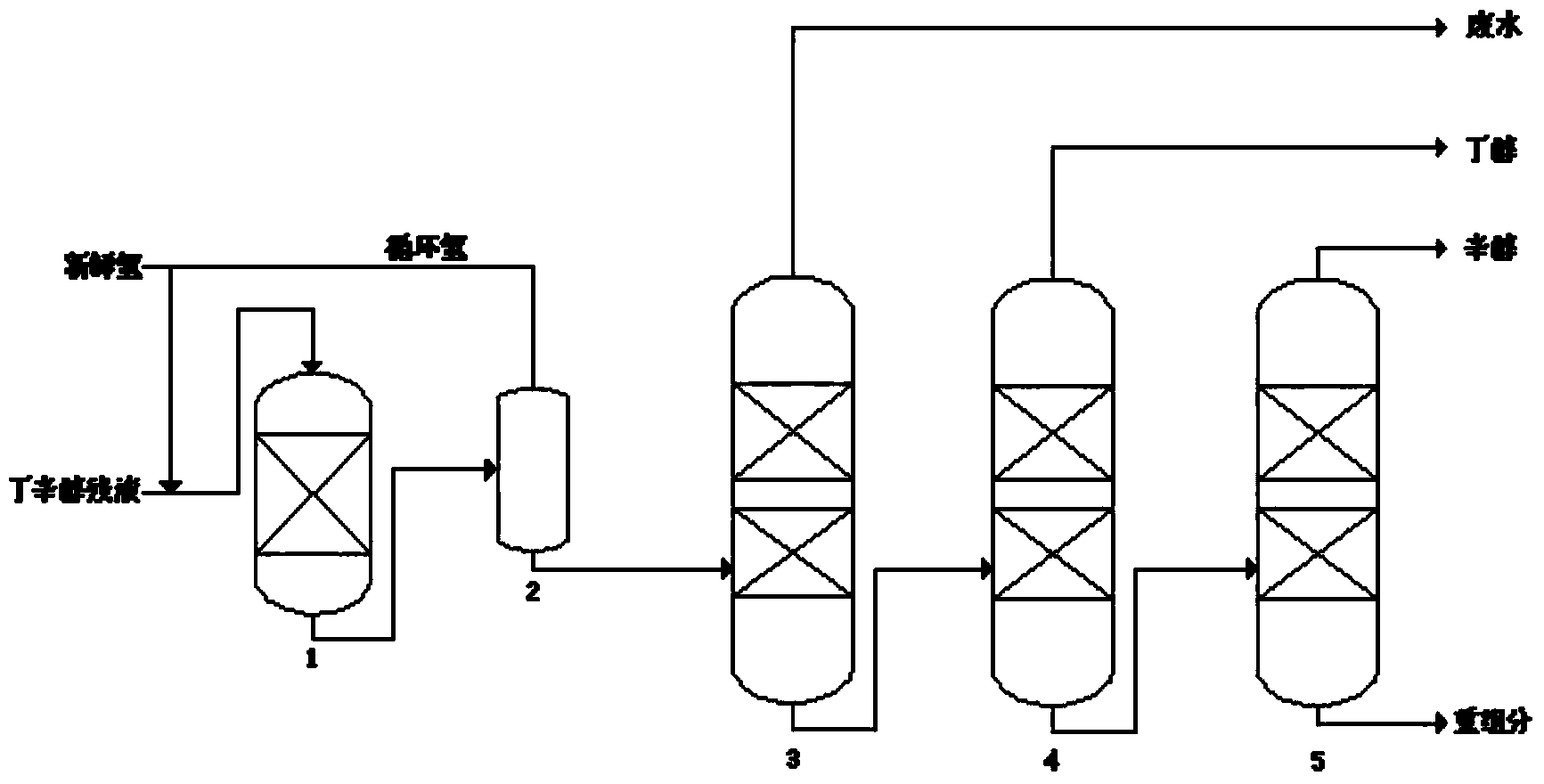Liquid phase hydrogenation method for residual liquids of butanol and octanol
A liquid-phase hydrogenation and raffinate technology, which is applied in the field of catalysis, can solve the problems of complex treatment process and low utilization rate of butanol-octanol raffinate, and achieve the effects of simplifying the process flow, improving the utilization rate and simplifying the preparation process.
- Summary
- Abstract
- Description
- Claims
- Application Information
AI Technical Summary
Problems solved by technology
Method used
Image
Examples
Embodiment 1
[0029] 98.5g of nickel nitrate and 91.3g of zinc nitrate were dissolved in 2L of deionized water, and 60g of SiO 2 Add the powder to the above solution and stir for 15 minutes, then add 1.2mol / L sodium carbonate aqueous solution to the above solution for co-precipitation, the pH value of the mixed solution after precipitation is 7, control the precipitation temperature to about 40°C, stir and age for 1 hour, then filter and Wash until neutral, dry at 120°C for 8 hours, calcinate at 500°C for 3 hours, and then press into tablets to obtain the catalyst precursor. The catalyst precursor was loaded into a 20mL fixed-bed reactor, and the catalyst sample 1 was obtained by reducing it with hydrogen for 2 hours under the conditions of a pressure of 1.0MPa, a temperature of 500°C, and a volume ratio of hydrogen to catalyst of 200:1.
[0030] After mixing the butanol raffinate and hydrogen, it enters the hydrogenation reactor from the top in liquid phase, and the catalyst of the present...
Embodiment 2
[0032] 147.8g of nickel nitrate and 68.5g of zinc nitrate were dissolved in 2L of deionized water, and 55g of SiO 2 Add the powder to the above solution and stir for 15 minutes, then add 1.2 mol / L potassium carbonate aqueous solution to the above solution for co-precipitation, the pH of the mixed solution after precipitation is 8, control the precipitation temperature to about 50°C, stir and age for 2 hours, then filter and Wash until neutral, dry at 110°C for 10 hours, calcinate at 450°C for 4 hours, and then press into tablets to obtain a catalyst precursor. The catalyst precursor was loaded into a 20mL fixed-bed reactor, and the catalyst sample 2 was obtained by hydrogen reduction under the conditions of pressure 2.0MPa, temperature 450°C, hydrogen gas and catalyst volume ratio 300:1.
Embodiment 3
[0034] 197g of nickel nitrate and 45.7g of zinc nitrate were dissolved in 2L of deionized water, and 50g of SiO 2 Add the powder to the above solution and stir for 15 minutes, then add 1.2mol / L ammonium bicarbonate aqueous solution to the above solution for co-precipitation, the pH of the mixed solution after precipitation is 7, control the precipitation temperature to about 60°C, and filter after stirring for 3 hours and washed until neutral, dried at 100°C for 12 hours, calcined at 400°C for 5 hours, and then pressed into tablets to obtain a catalyst precursor. The catalyst precursor was loaded into a 20mL fixed-bed reactor, and was reduced with hydrogen for 4h under the conditions of pressure 3.0MPa, temperature 400°C, and volume ratio of hydrogen to catalyst 400:1 to obtain catalyst sample 3.
PUM
 Login to view more
Login to view more Abstract
Description
Claims
Application Information
 Login to view more
Login to view more - R&D Engineer
- R&D Manager
- IP Professional
- Industry Leading Data Capabilities
- Powerful AI technology
- Patent DNA Extraction
Browse by: Latest US Patents, China's latest patents, Technical Efficacy Thesaurus, Application Domain, Technology Topic.
© 2024 PatSnap. All rights reserved.Legal|Privacy policy|Modern Slavery Act Transparency Statement|Sitemap


